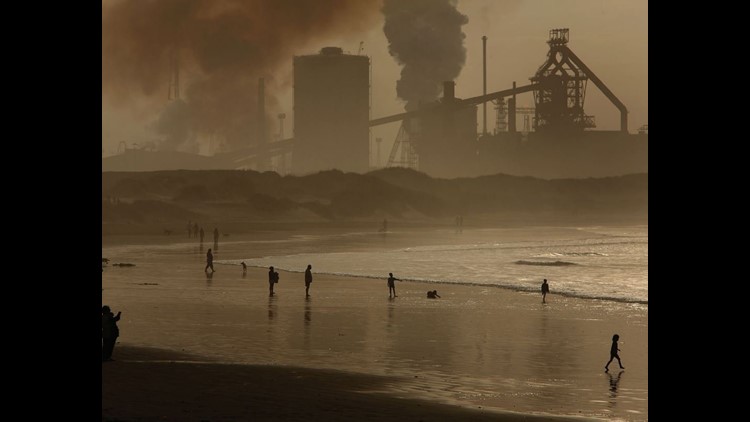UNICEF is calling on world leaders to reduce air pollution, saying it leads to the deaths of more children yearly than malaria and HIV/AIDS combined.
Around 600,000 children under age 5 die every year from diseases caused by or exacerbated by outdoor and indoor air pollution, especially in poor nations, UNICEF Executive Director Anthony Lake said in the introduction to a report titled “Clear the Air for Children.”
Air pollution also hurts children it doesn’t kill, including the unborn, he said.
“Pollutants don’t only harm children’s developing lungs, they can actually cross the blood-brain barrier and permanently damage their developing brains, and, thus, their futures. No society can afford to ignore air pollution.”
Climate change conference
The report was released in advance of the November 7-18 UN Climate Change Conference in Marrakech, Morocco, also known as COP22, the 22nd session of the Conference of the Parties.
COP21 was held in Paris in November 2015 and received a lot more attention, partly because so many world leaders convened not long after a major terrorist attack occurred there.
The conference achieved its major goal: Reaching a legally binding agreement to keep global warming below what most scientists say is the critical threshold of 2 degrees Celsius (3.6 degrees Fahrenheit) of warming.
What UNICEF wants
UNICEF is asking world leaders attending COP22 to take four steps:
–Reduce pollution by cutting back on fossil fuel combustion and investing in energy efficiency.
–Increase children’s access to health care, including more immunization programs and information programs about pneumonia, a leading killer of children under 5.
–Minimize children’s exposure to air pollution by keeping schools away from factories and other pollution sources and using cleaner cookstoves in homes.
–Improve monitoring of air pollution.
Air pollution hot spots
UNICEF said its air pollution report uses satellite imagery to show the global scope of the air pollution problem.
Around 2 billion children live in places with outdoor pollution exceeding World Health Organization air quality guidelines, the report said. Most of these children live in low- and middle-income countries.
That includes 620 million in South Asia, 520 million in Africa and 450 million in East Asia and the Pacific, UNICEF said.
The outdoor air pollution is most common in low-income, urban areas and is caused by vehicle emissions, heavy use of fossil fuels, dust and burning of waste, the report said.
“Developed countries have made great strides in reducing outdoor air pollution and protecting children from indoor pollutants,” Lake said. “Developing countries — both low- and middle-income — can and must do so, too.”
The map is similar to one released recently by the World Health Organization that shows 92% of the world’s population lives in places where outdoor air quality fails to meet WHO guidelines.
Indoor pollution
The satellite map doesn’t take into account the dangers of indoor pollution, primarily a problem in lower-income, rural areas where people use solid fuels like coal and wood for cooking and heating.
More than 1 billion children live in homes where solid fuels are used in this way, UNICEF said. For example, 81% of rural households in India use this kind of fuel because it’s cheap and easily available.
The study found a clear correlation between national income and the use of solid fuels in the home.
“Thailand — with a per capita income of US $5,816 — uses biomass to meet 23% of household energy needs, while the United Republic of Tanzania — with a per capita income of US $864 — uses biomass to meet 95% of household energy needs,” the report said.
UNICEF is already working to distribute cleaner cookstoves in Bangladesh, Zimbabwe and other poor nations.
Fetuses endangered
Air pollution is an especially serious threat for children because their lungs and immune systems are developing, the report said.
Unborn children are also at risk. Studies show chronic exposure to high levels of particulate matter is associated with high rates of fetal loss, premature births and lower birthrates.
UNICEF stresses that reducing air pollution is more than a children’s issue.
“Protecting children from air pollution is not only in their best interests; it is also in the best interests of their societies — a benefit realized in reduced health costs, in increased productivity, in a cleaner, safer environment, and thus, in more sustainable development,” Lake said.



